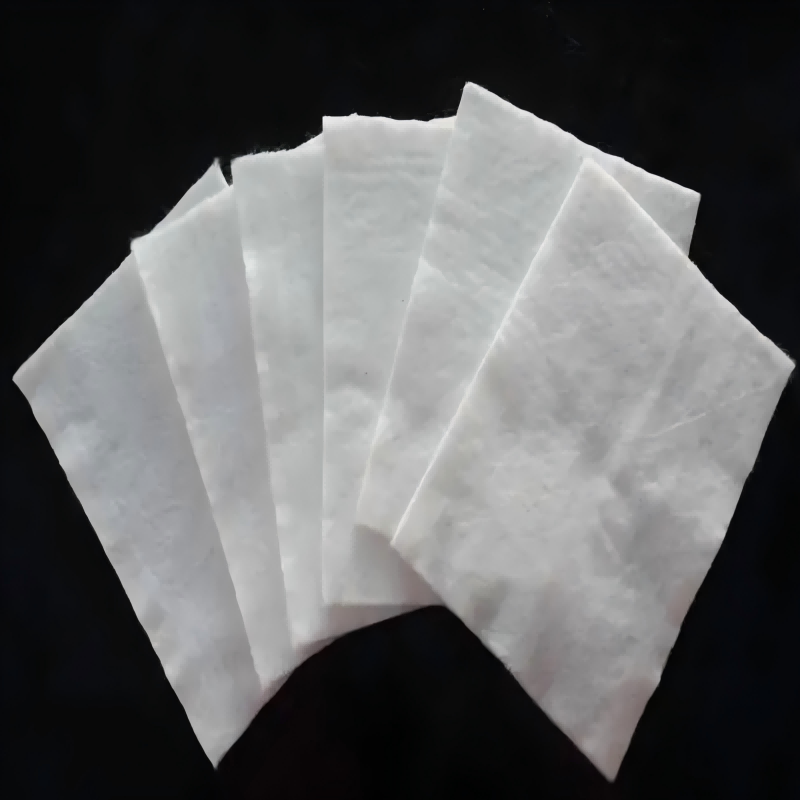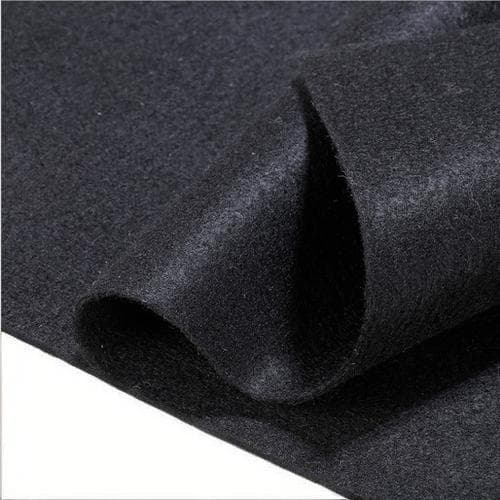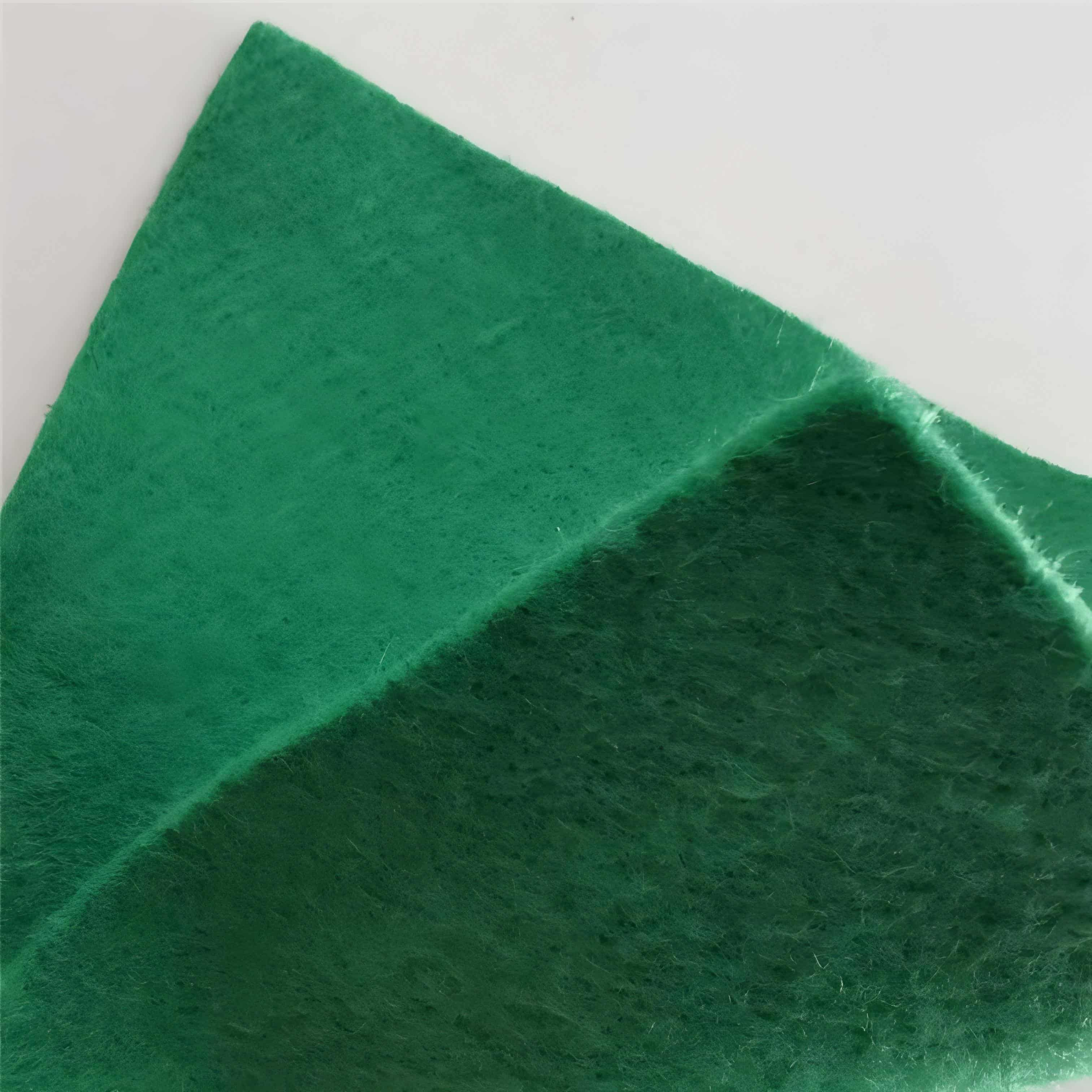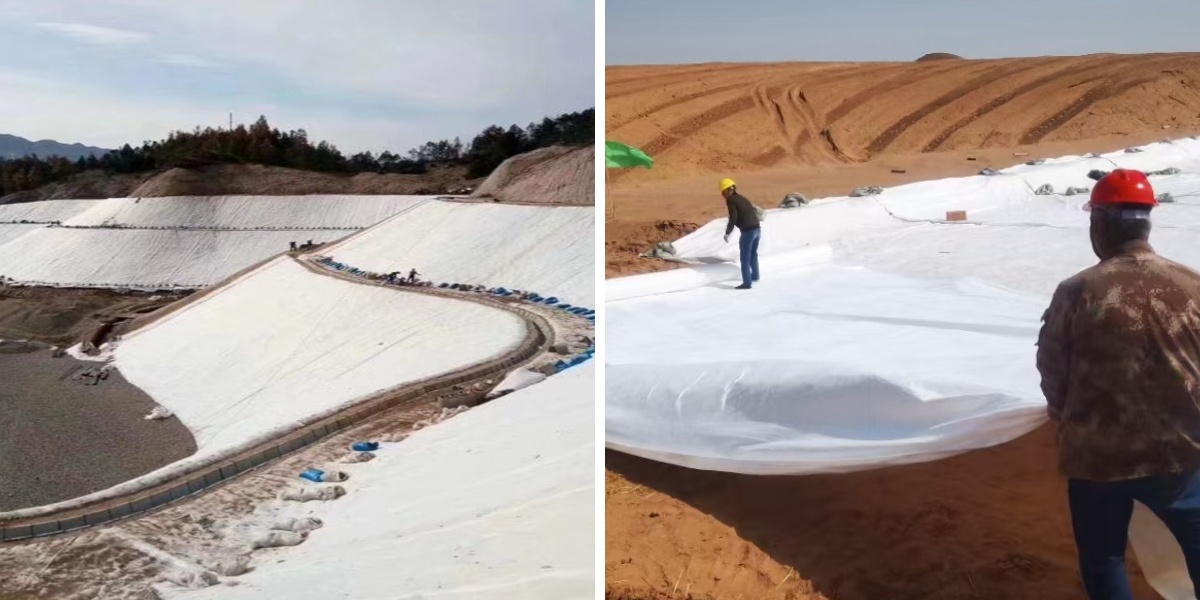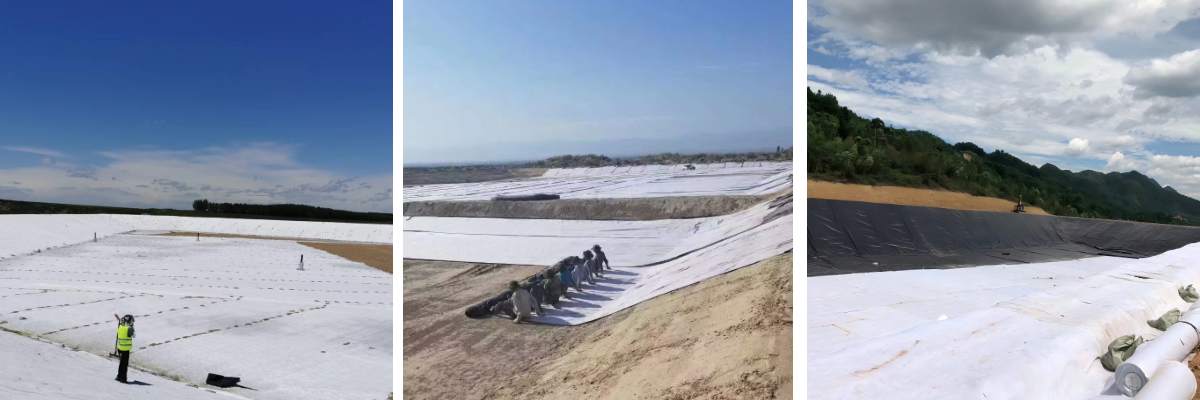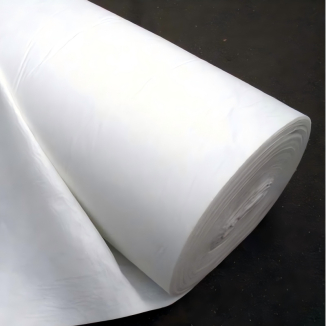Geotextile River Bank Protection
1. Anti erosion and erosion: High strength fabrics resist water flow erosion, intercept riverbank soil, prevent collapse, and protect shoreline stability.
2. Permeable drainage: Allow water to permeate and be discharged, avoid the accumulation of water on the bank slope, and maintain the integrity of the soil structure.
3. Ecological compatibility: Provide attachment carriers for vegetation, strengthen roots and fabrics in coordination, and balance protection and ecological restoration.
4. Easy to pave and durable: flexible and adaptable to irregular river banks, acid and alkali resistant and anti-aging, fast construction and long-term effectiveness.
Products Introduction:
Geotextile River Bank Protection is a high-performance geosynthetic material designed specifically for the protection of river bank slopes. It is made from polyester (PET) or polypropylene (PP) filaments and processed through needle punched non-woven or woven techniques. Some products are coated with anti UV and anti biological corrosion coatings. Its core function is to form a protective barrier with the characteristics of "anti erosion, soil stabilization and sand retention, permeability and breathability" by laying it on the surface of the riverbank or burying it in the soil of the bank slope, resisting the collapse of the riverbank caused by water erosion, and providing a foundation for vegetation growth, achieving ecological protection and stable reinforcement of the riverbank. This product is suitable for natural river channels, urban inland rivers, reservoir bank slopes and other scenarios. Compared with traditional masonry slope protection, it has advantages such as flexible protection, ecological compatibility, and convenient construction, making it an ideal material for modern river management.
Product Features:
1. High impact resistance and resistance to water erosion: woven with high-strength fibers, with a fracture strength of 15-50kN/m, excellent tear resistance and wear resistance. The special fabric structure can effectively disperse the impact force of water flow and resist erosion at a flow rate of 3-6m/s. Compared with ordinary geotextiles, its impact resistance is increased by more than 40%, preventing the soil on the bank slope from being washed away by water flow and protecting the stability of the bank shape.
2. Precise anti filtration drainage to maintain bank slope stability: The fabric pores are scientifically designed (0.1-0.5mm), which can intercept fine particles in the soil of the bank slope, prevent soil erosion, and quickly discharge accumulated water inside the bank slope, reduce pore water pressure, avoid bank slope sliding caused by soil softening, and maintain the integrity of the bank slope structure.
3. Strong ecological compatibility, promoting vegetation growth: The material has good breathability and permeability, providing a growth environment for aquatic plants and slope vegetation. The root system of vegetation can penetrate the fabric and interweave with the soil, forming a composite protection system of "vegetation geotextile soil", which not only enhances the protective effect but also restores the ecological function of the river, solving the ecological fragmentation problem of traditional hard protection.
4. Flexible adaptation, convenient and efficient construction: The texture is flexible and lightweight, and can naturally fit with the riverbank terrain, adapting to irregular shorelines and complex terrains. The laying process does not require large equipment and can be operated manually. It can be flexibly cut and spliced according to engineering needs, and the construction efficiency is more than 50% higher than that of masonry slope protection, greatly shortening the construction period.
5. Weather resistant and durable, with a long service life: After being treated with UV resistance, acid alkali resistance, and biological corrosion resistance, it can withstand various erosion in river water environments, and its service life can reach 10-20 years in natural environments, reducing maintenance costs in the later stage.
Product Parameters:
project | metric | ||||||||||
Nominal strength/(kN/m) | |||||||||||
6 | 9 | 12 | 18 | 24 | 30 | 36 | 48 | 54 | |||
1 | Longitudinal and transverse tensile strength / (kN/m) ≥ | 6 | 9 | 12 | 18 | 24 | 30 | 36 | 48 | 54 | |
2 | Maximum elongation at maximum load in longitudinal and transverse directions/% | 30~80 | |||||||||
3 | CBR top penetration strength /kN ≥ | 0.9 | 1.6 | 1.9 | 2.9 | 3.9 | 5.3 | 6.4 | 7.9 | 8.5 | |
4 | Longitudinal and transverse tearing strength /kN | 0.15 | 0.22 | 0.29 | 0.43 | 0.57 | 0.71 | 0.83 | 1.1 | 1.25 | |
5 | Equivalent aperture O.90(O95)/mm | 0.05~0.30 | |||||||||
6 | Vertical permeability coefficient/(cm/s) | K× (10-¹~10-), where K=1.0~9.9 | |||||||||
7 | Width deviation rate /% ≥ | -0.5 | |||||||||
8 | Unit area mass deviation rate /% ≥ | -5 | |||||||||
9 | Thickness deviation rate /% ≥ | -10 | |||||||||
10 | Thickness coefficient of variation (CV)/% ≤ | 10 | |||||||||
11 | Dynamic perforation | Puncture hole diameter/mm ≤ | 37 | 33 | 27 | 20 | 17 | 14 | 11 | 9 | 7 |
12 | Longitudinal and transverse fracture strength (grab method)/kN ≥ | 0.3 | 0.5 | 0.7 | 1.1 | 1.4 | 1.9 | 2.4 | 3 | 3.5 | |
13 | Ultraviolet resistance (Xenon arc lamp method) | Longitudinal and transverse strength retention rate% ≥ | 70 | ||||||||
14 | Ultraviolet resistance (fluorescence UV lamp method) | Longitudinal and transverse strength retention rate% ≥ | 80 | ||||||||
Product Applications:
1. Protection of natural river bank slopes: Lay natural river bank slopes in mountainous and hilly areas to resist seasonal floods and erosion of riverbanks by perennial water flow, protect the stability of river morphology, provide a growth foundation for riverbank vegetation, and maintain the balance of river ecosystem.
2. Urban Inland River Management: Used for bank slope protection of urban inland rivers and scenic waterways, combined with ecological bags, vegetation planting and other techniques, to prevent bank slope collapse while creating ecological landscape shorelines, improving the quality of urban water environment, and adapting to urban waterfront parks, river greenways and other scenes.
3. Protection of reservoir and lake bank slopes: Lay on the upstream and downstream slopes of reservoirs and lakes to resist erosion from wind, waves, and water level changes, prevent collapse and soil erosion, and protect the flood control safety and ecological environment of reservoirs and lakes.
4. River regulation and dredging engineering: In river dredging, straightening and cutting projects, as the core material for bank slope reinforcement, it is combined with techniques such as stone throwing and sinking to quickly restore bank slope stability and prevent the river from being washed and collapsed again after regulation.
Geotextile River Bank Protection has the core advantages of "high impact resistance, strong filtration and drainage, ecological compatibility, and convenient construction", effectively solving the pain points of "insufficient impact resistance, serious ecological damage, and low construction efficiency" in river bank slope protection. Whether it is the ecological protection of natural rivers or the landscape management of urban inland rivers, this product can promote the restoration and balance of river ecosystems while ensuring the stability of bank slopes. Its flexible protection characteristics adapt to various complex terrains, with convenient construction and controllable costs. It is an ideal choice for achieving the three in one goals of "flood control safety, ecological protection, and landscape beautification" in modern river management, providing reliable technical support for water resource protection and water environment governance.


